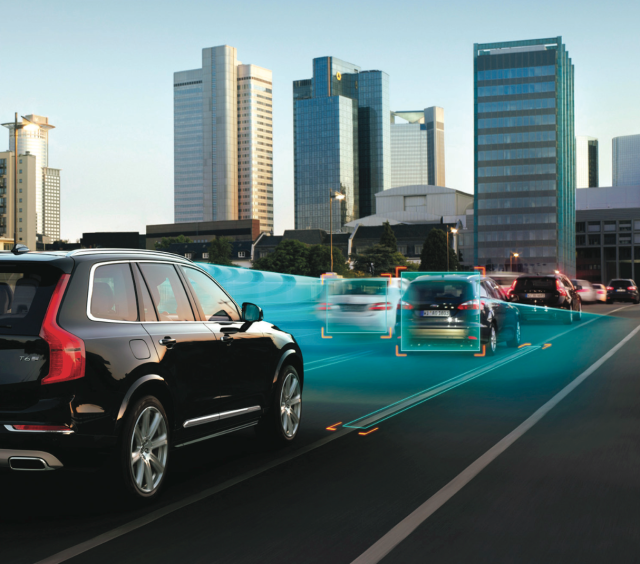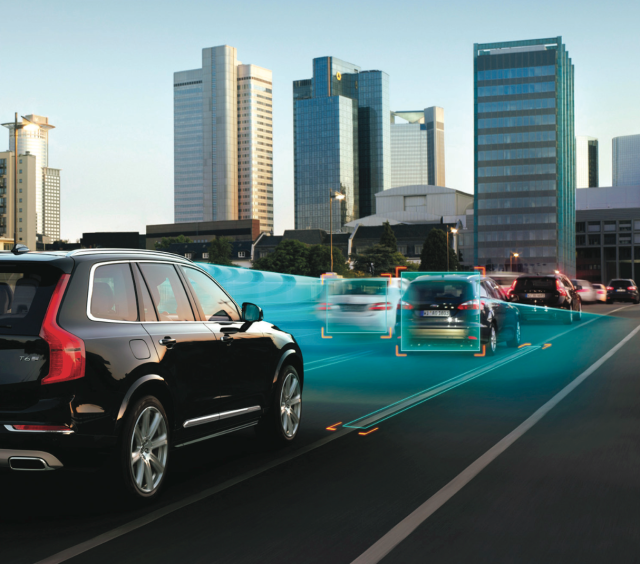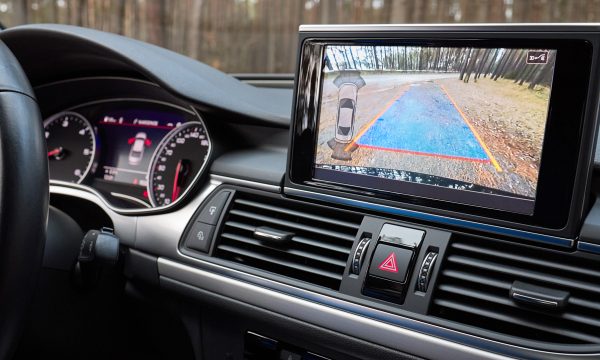AUTOMATIC EMERGENCY BRAKING IS ABOUT TO BECOME STANDARD EQUIPMENT

In spite of mass media reports to the contrary, the autonomous car isn’t going to swoop down on us fully hatched — apart, perhaps, from some opportunistic attempts at being first to market.
Rather, as is the established norm in the auto industry, it will evolve gradually.
That evolution is well underway, as evidenced by the increasing availability of Advanced Driver Assist Systems (ADAS) such as adaptive cruise control, lane departure warning, lane keeping, and frontal collision warning. Each of which, in its own way, is a step towards full autonomy.
Now, that process is about to get a turbo-boost, thanks to a recent accord among 10 automakers, the U.S. Department of Transportation (DOT), its National Highway Traffic Safety Administration (NHTSA), and the Insurance Institute for Highway Safety (IIHS).
They have agreed to work together to make Automatic Emergency Braking (AEB) standard equipment on all light-duty vehicles, including passenger cars, SUVs, and pickup trucks, that those companies sell in the U.S. (and by virtue of our homogenized safety regulations, Canada).
It’s a landmark agreement for Automatic Emergency Braking (AEB), like Electronic Stability Control (ESC) before it is a fundamental building block towards full autonomy.
If that prospect is ever to be realized on a mass scale, it needs to be universally adopted and accepted by drivers — along with vehicle-to-vehicle (V2V) and vehicle-to infrastructure (V2X) connectivity, which are now in the late stages of their development.
AEB is already available on about a quarter of the models sold here, although it is standard on few.
Just as now-mandatory ESC developed out of ABS technology, AEB is a further development of Forward Collision Warning. That technology, which uses in-vehicle sensors such as radar, cameras and lasers to detect an imminent crash and warn the driver, is now available on more than half the models sold in North America, according to the IIHS.
With the addition of AEB, if the driver doesn’t respond immediately and appropriately to such a warning, the system automatically engages the brakes — hard. That brake application may not be enough to prevent a collision, depending on the vehicle closing speed, but in many cases it will at least mitigate the crash’s severity.
AEB is already available on about a quarter of the models sold here, says the IIHS, although it is standard on few. While widespread adoption of this technology will help clear the path to full autonomy, its primary purpose is the more immediate contribution it can make to vehicle safety.
“The evidence is mounting that AEB is making a difference,” said IIHS President Adrian Lund. “Most crashes involve driver error. This technology can compensate for the mistakes every driver makes because the systems are always on alert, monitoring the road ahead and never getting tired or distracted.”
Several studies, including a recent report from the IIHS, show that AEB technology can reduce insurance injury claims by as much as 35 per cent.
The 10 automakers committed to making AEB standard are Audi, BMW, Ford, General Motors, Mazda, Mercedes-Benz, Tesla, Toyota, Volkswagen and Volvo. They will work together with the IIHS and NHTSA on the details and timeline for bringing that commitment to fruition.
Key players noticeably absent from that list are FCA, Honda/Acura, Hyundai/Kia and Renault /Nissan. But probably not for long.
The 10 participating manufacturers combined account for more than half of all new-vehicle sales in North America, so the competitive pressures on the rest to follow suit will be overwhelming — not to mention the pressures from regulators.
“These 10 manufacturers have committed to an important principle: AEB is a life-saving technology that should be available to every vehicle owner,” said NHTSA Administrator, Mark Rosekind.
“In the months ahead, NHTSA will work closely with IIHS and the auto industry to carry out that commitment, and we encourage every other manufacturer to join this effort.”
It’s a brilliant strategy. The normal rulemaking process for achieving such an objective is complicated and extremely time-consuming, with all the political and bureaucratic hurdles that have to be cleared. Typically, they involve extensive opposition by the affected automakers, often extending the timetable before they have to comply.
This approach allows the participating automakers to have serious input into crucial aspects of the technology’s implementation in a cooperative rather than antagonistic relationship. And it makes an end-run around the traditional rule-making process, relieving the regulators from many of its most controversial and time-consuming elements.
By the time a formal regulation is necessary, most of the heavy lifting will have been achieved — and the technology already widely adopted. It’s a process worth emulating in the future.










